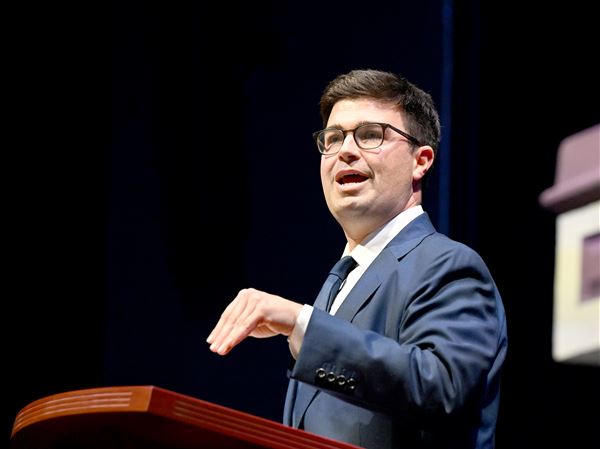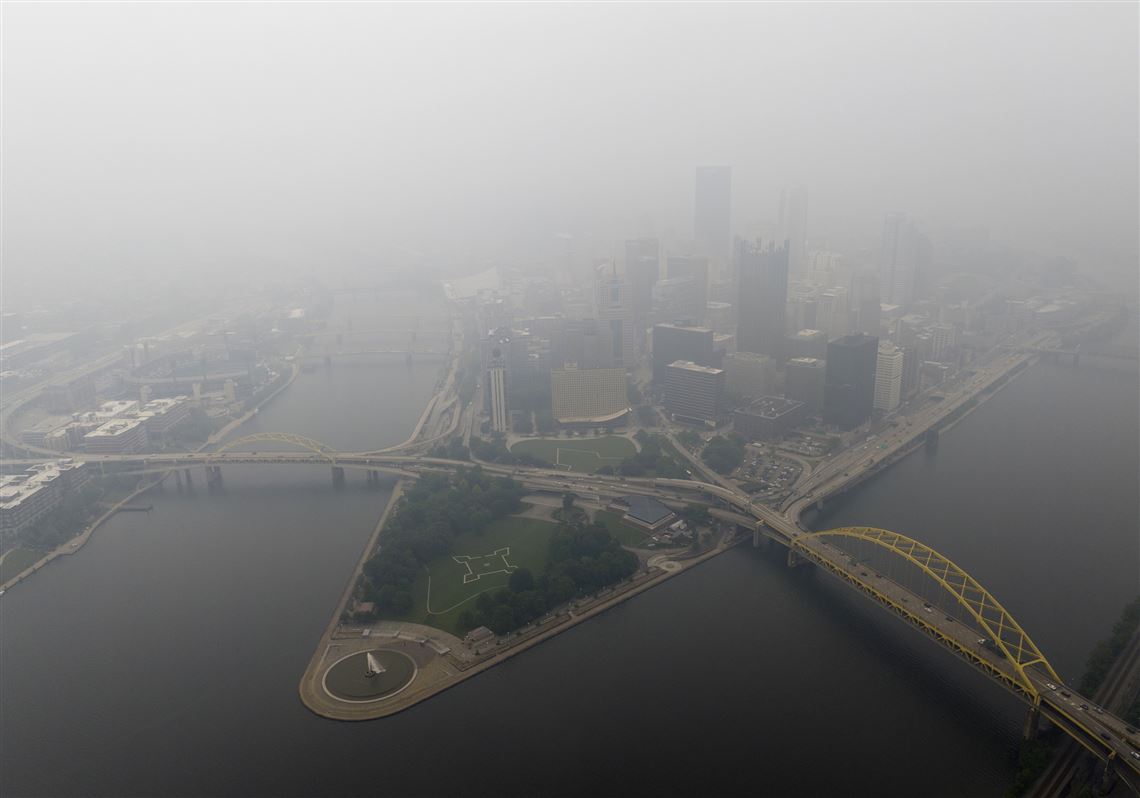Within 60 years, Pittsburgh will experience a climate much like Jonesboro, Arkansas, which is now about 10°F warmer in the summer. The founders of Earth Day were mostly unaware of climate change, but this form of air pollution is the main threat to a healthy environment and economy today, as well has human health.
The first Earth Day in 1970 was inspired by a bold vision that environmental concerns warranted equal footing to economic concerns. This perspective emerged along with landmark environmental legislation passed by Congress in the 1960s and 1970s, which enjoyed bipartisan support and was signed by Presidents Johnson and Nixon. The issues and the players have changed considerably, but the need for focusing on informed stewardship of the resources that Earth provides has never been stronger.
Air pollution, known then as “smog” because of its smoky, fog-like haze, was a major respiratory health issue in cities across America in 1970, including Pittsburgh. Thanks to subsequent legislation in the 1990s, again with bipartisan support, we’ve cleaned up most (but not yet all) of those sources of air pollution.
The new threat
Now, however, on the 55th Earth Day, we are now facing the new threat of an odorless and colorless form of air pollution, namely carbon dioxide, methane, and nitrous oxide, which is rapidly changing the climate in ways that profoundly affect the environment, the economy, and human health. Already, farmers throughout the Midwest are facing more droughts, floods, and generally unpredictable weather, which makes food more difficult to grow and more expensive for consumers to buy.
One industry that will be challenging to wean from its dependency on fossil fuels is steel production, once a huge player and still hanging on in the greater Pittsburgh metropolitan area. Even here, there is reason for optimism, as pilot plants that make steel with renewable energy are working in Sweden. The same technology could a boon to the American steel industry and a major win for climate change, air pollution mitigation, and the region’s economy.
Another major topic in the early 1970s was whether to build the Trans-Alaskan Pipeline to transport crude oil some 800 miles across the state. Today, because of the new extraction technology known as “fracking,” there are dozens of controversial pipeline proposals to transport oil and gas across the country, including natural gas from western Pennsylvania.
The coal industry, which was already employing many fewer miners due to mechanization, declined precipitously as natural gas from fracking gained an economic edge. Economics, not the environment, was the main driver of the coal industry’s decline.
Ultimately, both will need to be replaced by renewable energy sources within the next two decades in order to avoid the worst outcomes of climate change. Fortunately, renewables are also now cost competitive that economics and the environment are both driving the renewable energy bus.
It hurts low-income communities
Concerns about extinction of plant and animal species has grown exponentially since the 1970s, as humans appropriate ever larger percentages of land and water for extracting food and other resources, thereby destroying habitats.
In an unforeseen twist, we must now add “moderate Republicans” like the late Pennsylvania Senator John Heinz, an ardent leader of bipartisan environmental policy in the late 20th century, to the list of “endangered species.”
The environmental movement of the 60s and 70s was often criticized as being a hobby of upper middle-class whites who had disposable income and time to devote to the niceties of a clean environment and wilderness conservation. Today, we see the vulnerability of low-income communities who do not have the economic resources to adapt to climate change. They are still exposed disproportionally to remaining pockets of poor air quality and to lead in drinking water.
Pittsburgh is one of many American cities where the legacy of redlining in the 1930s, which denied mortgages and financing to communities of color to improve their neighborhoods, now exacerbates inequity for residents. They suffer more heat stress because their neighborhoods have more heat-retaining asphalt and fewer shade trees than in nearby, affluent, suburban boulevards, for example.
Similarly, debate around Earth Day in 1970 was often cast as a choice between jobs or the environment, whereas today’s Green New Deal simultaneously advances three goals of creating jobs and stewarding the environment and conferring those benefits equitably to all communities.
Eventual reversal
More climate change hardships are inevitable, but calamity is not. We now have the technology and knowledge to aggressively decarbonize our economy and eventually reverse the climate change threat, while also providing long-term economic and social benefits.
Earth Day is, sadly, far more partisan than it was at its inception, but as the benefits of reversing climate change become apparent to all, it can represent a vision of a stable and habitable climate that yields an economically prosperous and equitable future.
Eric A. Davidson, a soil scientist and biogeochemist at the University of Maryland Center for Environmental Science, is author of “Science for a Green New Deal.”
First Published: April 22, 2024, 9:30 a.m.














